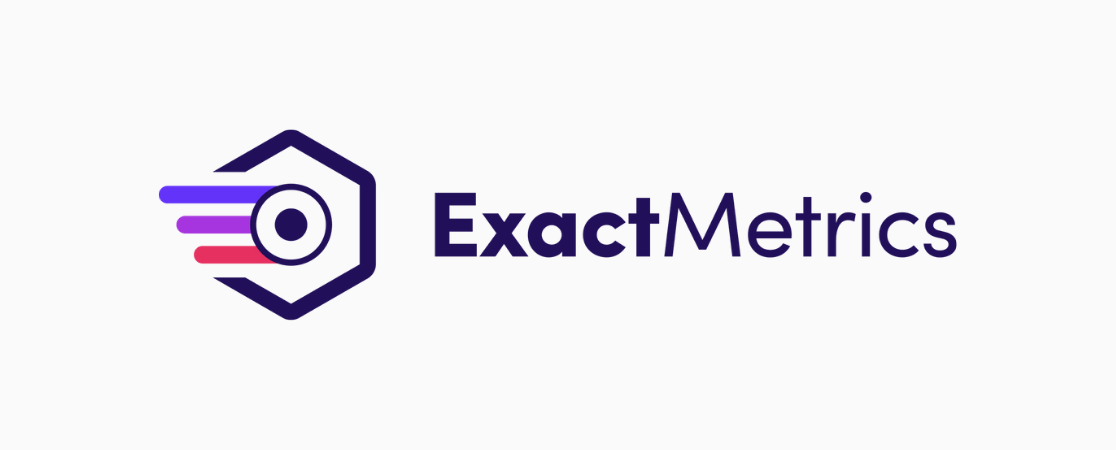Do you want to know how to set up Microsoft Ads, formerly known as Bing, conversion tracking on your WordPress site? Tracking your Bing Ad conversions can help you understand what’s effective, or what could use improvement, in your advertising strategy.
This is crucial information for enhancing your Microsoft ad campaigns, generating more sales, and accelerating your business growth.
In this article, we’ll guide you through the process of setting up Bing conversion tracking, step-by-step. But first, let’s get familiar with the Bing UET tag.
How Does a Bing UET Tag Work?
A Bing universal event tracking code, also known as a UET tag, Bing pixel, or Microsoft tag, is a small piece of code you put on your website. This code snippet enables Microsoft Ads (Bing Ads) conversion tracking, so you can keep track of what happens after people click on your ads.
Normally, installing the UET tag code on all of your website pages to track ads with Microsoft (Bing) analytics can be a lot of work and a bit confusing for the average user. Luckily, for WordPress users, there’s a simple way to install your Bing UET tag and start tracking conversions without using any code!
With a Microsoft (Bing) UET tag, you can track what visitors do on your website after they click on your ad. This includes tracking conversion events and page views and categorizing your audiences for ad retargeting, which means showing ads to people who visited specific pages on your site before.
By understanding your audiences better, you can create a remarketing plan that targets the right audience and effectively increases sales with Bing retargeting.
If you’re familiar with Google Analytics, you’ll find that a Microsoft Advertising (Bing) UET tag works in a similar way to Google tags, which track Google Ads (AdWords) conversions.
How to Set Up Bing Conversion Tracking
Let’s start by creating a new Microsoft Ads conversion goal and UET tag. After that, we’ll guide you through the simplest way to add Bing conversion tracking to your WordPress site.
After this tutorial, you’ll be able to set up conversion tracking for your Bing Ads quickly and easily! These are the steps we’ll cover:
- Install ExactMetrics
- Activate the PPC Ad Tracking Addon
- Create a New Conversion Goal
- Fill In Your Conversion Goal Details
- Set Up a Bing UET Tag
- Copy Your UET Tag ID
- Add Your UET Tag ID in WordPress
Step 1: Install ExactMetrics
If you use ExactMetrics, the best premium Google Analytics plugin for WordPress, you can quickly install your Microsoft Ads (Bing) UET tag to track conversions from your ads with just a couple of clicks.
With ExactMetrics’ PPC Ad Tracking addon, you can easily keep track of your Bing Ads page views and purchases in WordPress. It even works seamlessly with popular plugins like WooCommerce, Easy Digital Downloads, LifterLMS, MemberPress, and GiveWP for conversion tracking.
You’ll also get a range of other really awesome Google Analytics features with ExactMetrics, such as:
- Google Ads conversion tracking
- Facebook (Meta) Ads conversion tracking
- eCommerce tracking
- Outbound link tracking
- Form conversion tracking
- Author tracking
- Video play tracking
- And more…
In later steps, we’ll be using the PPC Ads Tracking addon in WordPress to add your Bing UET tag. To access the addon, you’ll need to have ExactMetrics Pro.
For a detailed guide on how to set up ExactMetrics, take a look at our tutorial: How to Add Google Analytics to Your WordPress Site.
Step 2: Activate the PPC Ad Tracking Addon
After you have ExactMetrics Pro installed and set up on your website, we’ll need to activate the addon for Microsoft Ads conversion tracking. From your WP admin, click ExactMetrics » Addons. Find the one called PPC Tracking and click the green Activate button:
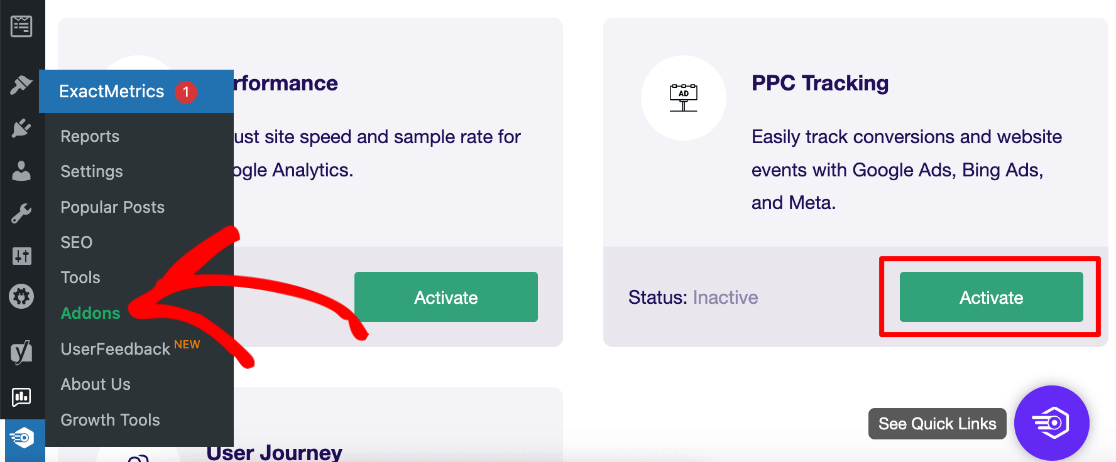
Now that you have ExactMetrics installed and the PPC Tracking addon activated, let’s get started on setting up your conversion tracking goals and UET tag in Microsoft Ads.
Step 3: Create a New Conversion Goal
To begin, go to Microsoft Advertising and log in to your account.
Once you’re logged in, click on Tools at the top of the page, then find and click Conversion goals, under the Converversion tracking section.
If your top menu has limited options and shows Smart Pages with only a few items under Tools, you’ll need to click Upgrade to Expert in the left sidebar to access the tools we’ll be using (you can refer to this screenshot for help).
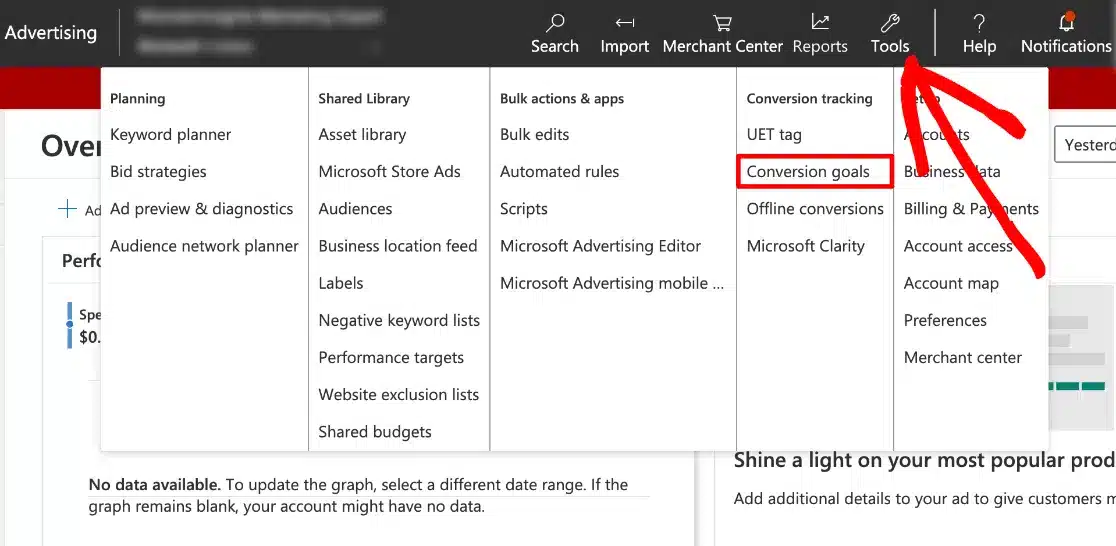
Now click the blue +Create button to make a new goal for Bing conversion tracking:

Now you’ll start the process of setting up your new conversion goal in Microsoft Ads. In the first step, Click Website, and then click Next:
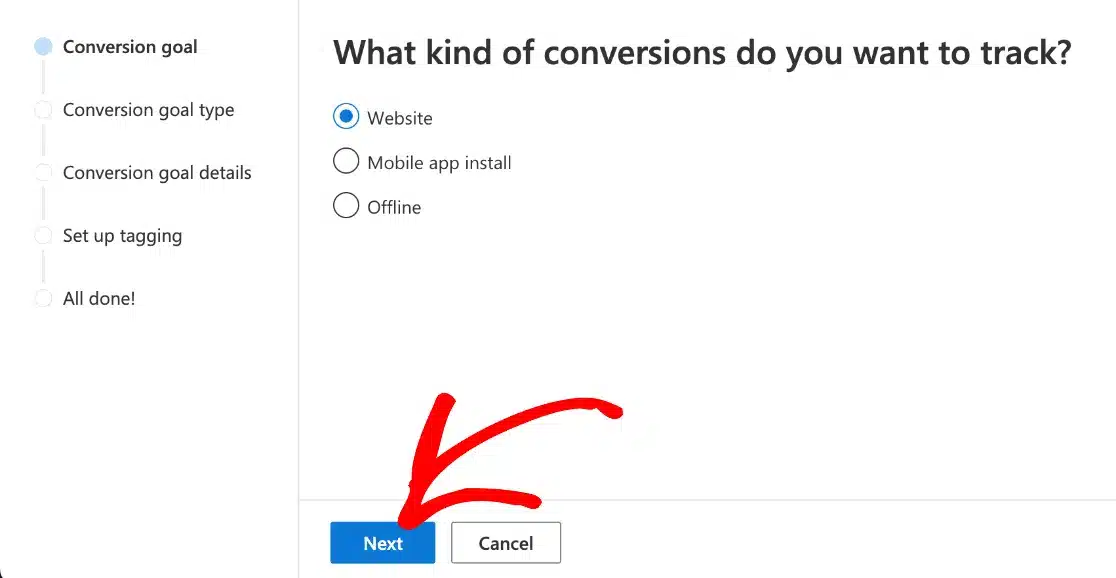
Next, you will need to choose a Goal Category for your conversion by using the drop-down list. The three main categories are Sales, Leads, and Others. Under each category, you’ll find more specific conversion events that you can select.
For this tutorial, we’ll choose Other » Page View to track every time a customer views our pricing page:
![]()
Once you choose your conversion category, you’ll see a question with options for the Goal Type, which is the specific action that triggers a conversion.
To track your Microsoft Ad (Bing) conversions in your WordPress dashboard using Exact Metrics’ no-code method, select Destination URL. Or if your goal is Purchases, you can choose Product to track your WooCommerce conversions.
If you’re using Other as your goal, you’ll notice there’s an option called Event, along with a couple more Goal Types. If you prefer to use any of these options as your conversion trigger, we suggest using WPCode for help installing custom code snippets and UET tracking tags.
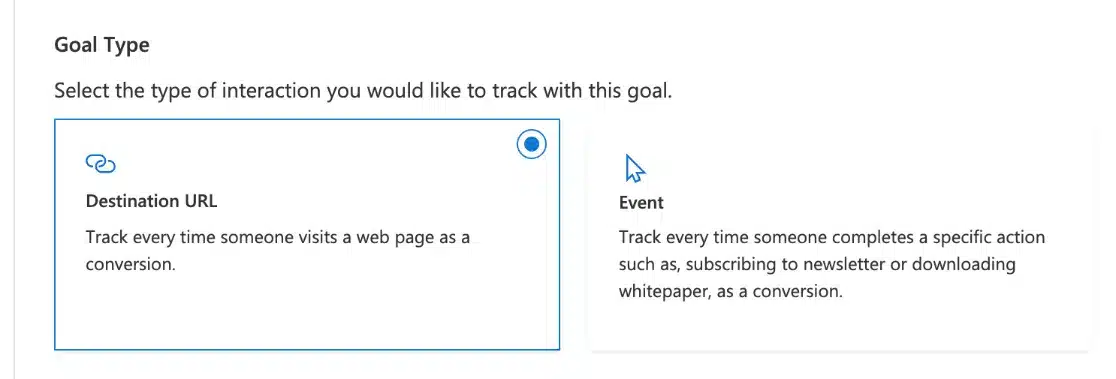
Since our conversion is when a customer views our pricing page and doesn’t depend on whether they purchase a product or not, we’ll use Destination URL as our Goal Type. After you’ve selected your category and type, press Next at the bottom.
Step 4: Fill In Your Conversion Goal Details
The next step is to fill in the fields under Create a destination goal. First, give your conversion goal a name that’s specific. Once you name it, you can’t use the same name in the future.
Then, choose the type of Destination URL from the four options given, and enter the target destination for your conversion in the field provided. If you’re not sure what each type of destination URL means, check out our explanations below.
Lastly, you’ll have to decide how to track conversion value in Bing Ads and set the value of each conversion. If you’re tracking product purchases, you may want to set it to the second option and use variable revenue, which means the value of conversion actions may vary based on the purchase price.
For our pricing page view conversion event, we set our value to be the same ($5.00) for each conversion. Go ahead and enter the value you want to assign, or the default value if you’re using a UET variable:
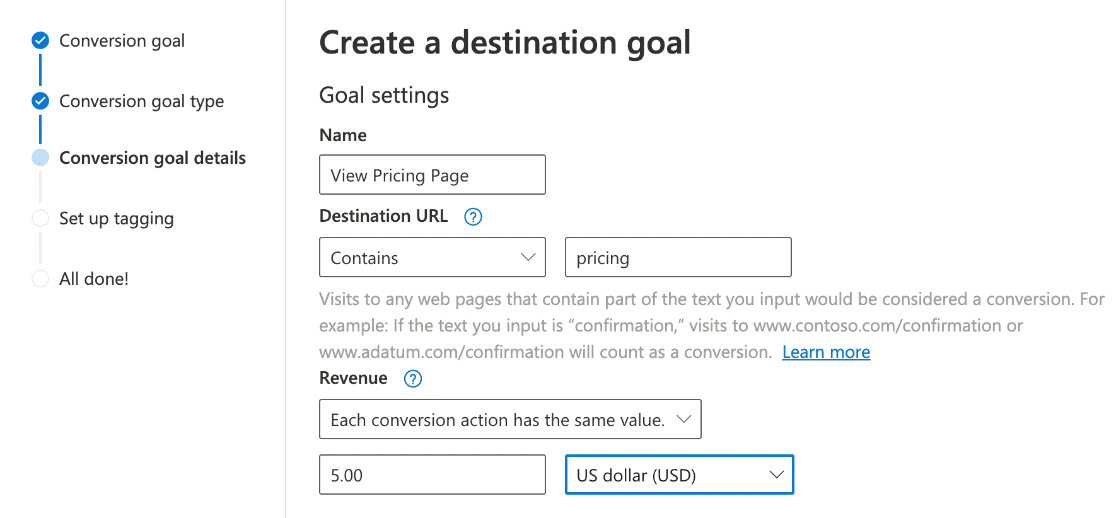
Types of destination URLs explained:
- Equals: The conversion URL must be exactly the same as the destination URL.
- Begins with: The conversion URL must start with the same string as the destination URL you enter here.
- Contains: The conversion URL must have the same string you enter here at least somewhere in it.
- Regular expression: This is a more advanced option that allows for flexible matching and wildcards using special characters. It’s not recommended unless you have experience with creating regular expressions.
For example, our regular pricing page is www.exactmetrics.com/pricing/, but the string could change if we have a promotion running on our site. Even if the pricing page URL is a little different, we still want Microsoft (Bing) to record it as a conversion. So, we’re going to use Contains and enter “pricing.” Now, when pricing is anywhere in the URL, it’ll track the conversion correctly.
Under the Revenue section, there are more options to customize your conversion tracking in Advanced Settings. One of the important sections here is Count.
This setting allows you to choose whether Bing Ads tracking will record a conversion every time the event happens (All), or only when it’s Unique.
For example, for purchases, you’d most likely want to record every sale. But let’s say, like us, you’re tracking when a customer views your pricing page. In that case, you’d probably only want to record the first time a customer views the page.
Microsoft Ads (Bing) already assigns a unique ID when a visitor clicks your ad. Meaning, with this default auto-tagging, there’s no extra setup if you choose to use a unique count.
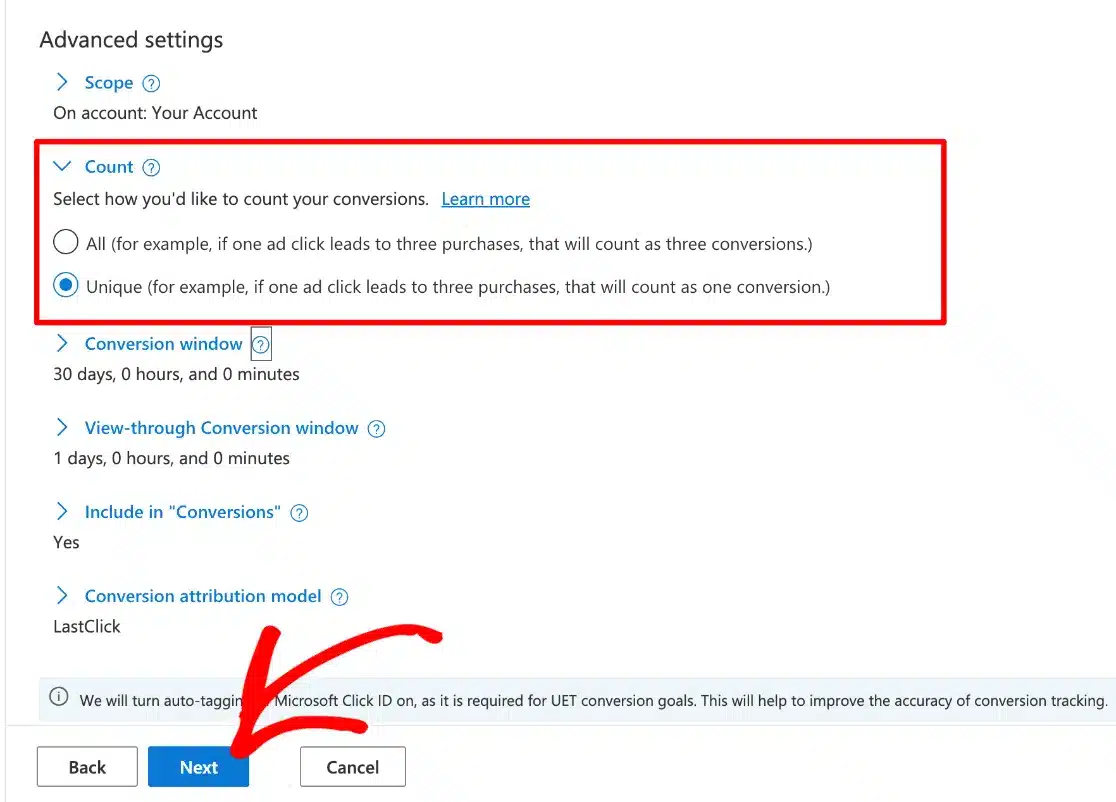
You can also customize other Advanced settings like Scope, Conversion Window, or the Conversion Attribution Model if you want.
When you’re done, click on the Next button.
Step 5: Set Up a Bing UET Tag
Now we’ll create your Bing UET tag. If this is the first time you’re creating a conversion tag in Microsoft Ads, choose the first option, (No…), and click on the Save and next button at the bottom:
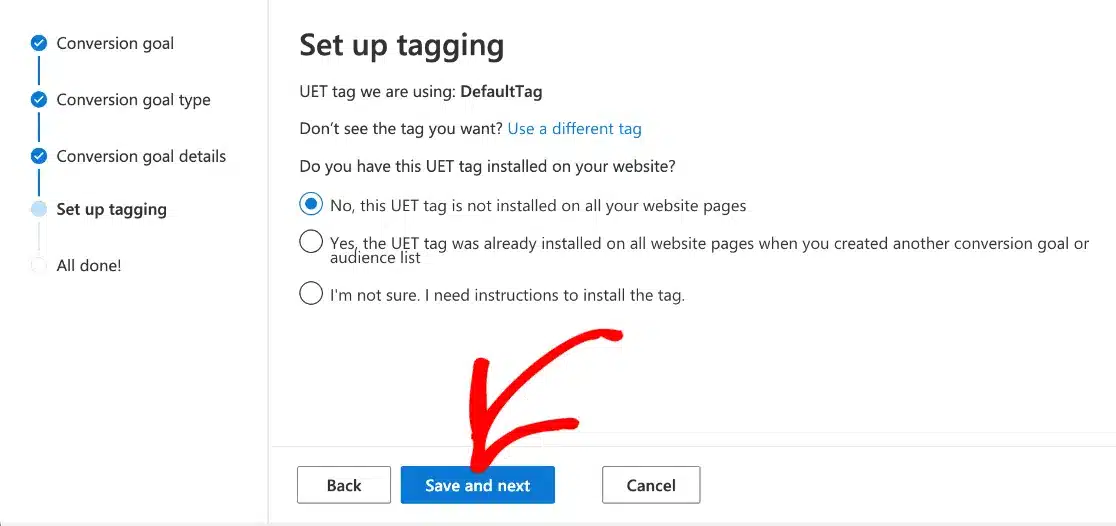
Now you’ll see instructions on how to add the Bing UET tag to your website. There are a few different ways to do this, like hiring a developer, using Google Tag Manager, or installing a UET tag helper plugin.
For our tutorial, we’ll be using ExactMetrics which actually doesn’t require the code at all. But, let’s walk through the process anyway. Select the option to Install the tag yourself, and click the Next button:
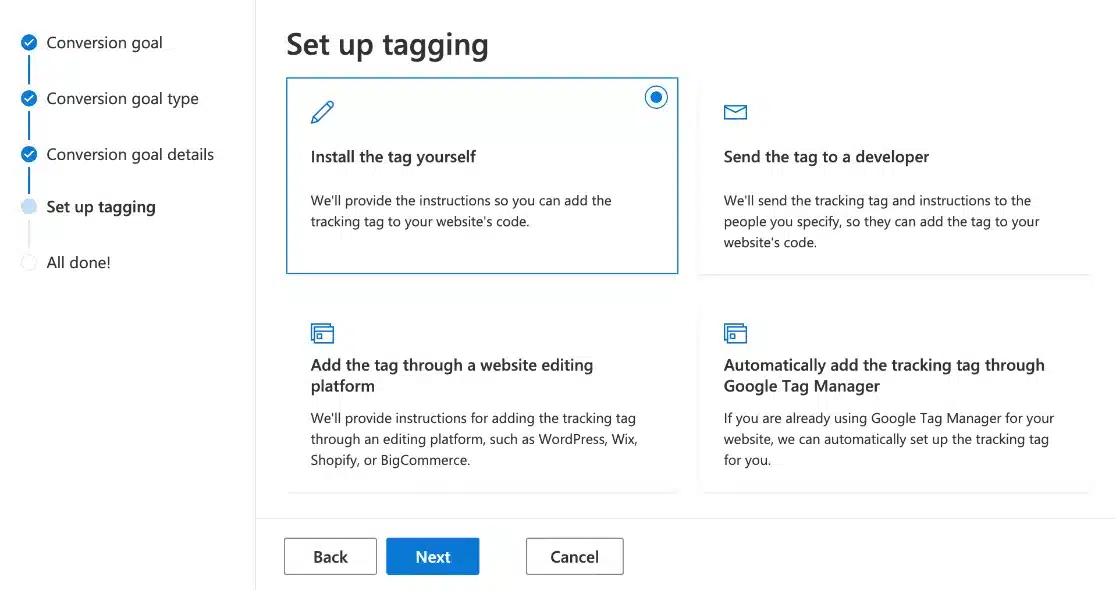
Now you’ll be shown the base code and instructions for adding the code to every page on your website. If you’re using ExactMetrics to install your UET tag, you can skip the base code installation entirely. Just scroll to the bottom of the page and click the Next button to continue with your setup:
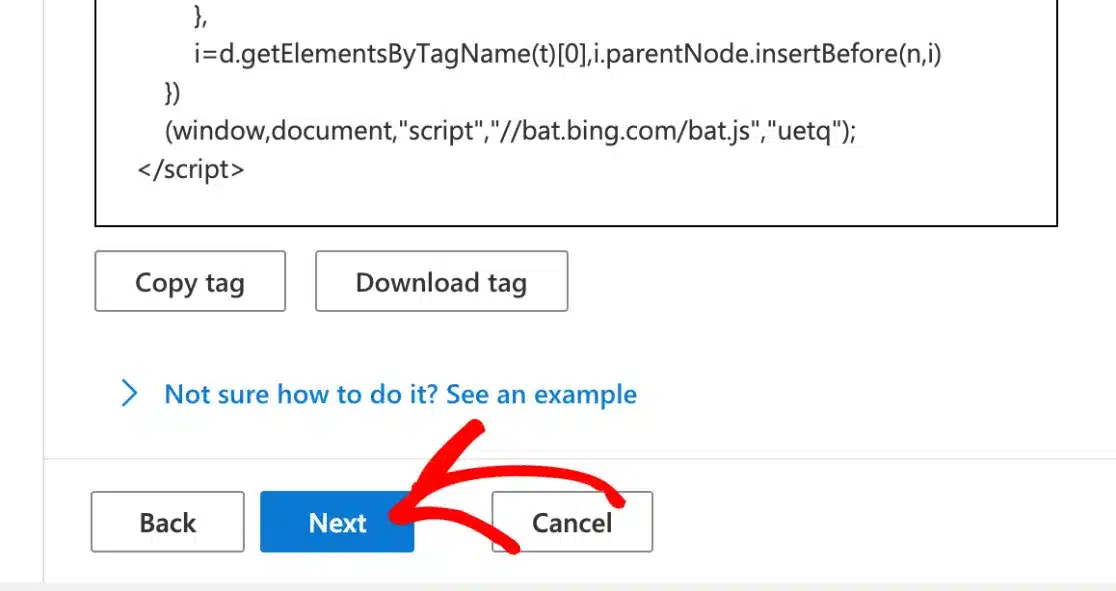
Great job creating your Microsoft Ads (Bing) UET tag! Now it’s time to add it to your WordPress site.
Note: If you want to install your base code manually, you’ll need to copy the code and follow the instructions given to you by Microsoft Ads. Check out WPCode for help adding code snippets to your website.
Add Bing UET Tag to WordPress (Simple Way)
As we mentioned earlier, we’ll be using ExactMetrics‘ PPC Ad Tracking addon to install the UET tag on WordPress in a couple of clicks. You’ll need ExactMetrics Pro to access the addon.
If didn’t do it previously, download ExactMetrics Pro and jump back to Step 2 to activate the PPC Tracking addon.
When you’ve finished all the steps above, keep reading to add your UET tag to WordPress and finish your Microsoft Ads (Bing) conversion tracking setup.
Step 6: Copy Your UET Tag ID
From your Microsoft advertising account, click Tools » UET Tag:
![]()
When you look at the UET Tag page, you’ll see the DefaultTag you created. If you want to change the name of your UET tag, you can do so by clicking on the Tag name and editing it.
The Tag ID is located in the 3rd column, and you’ll need to copy it from there:
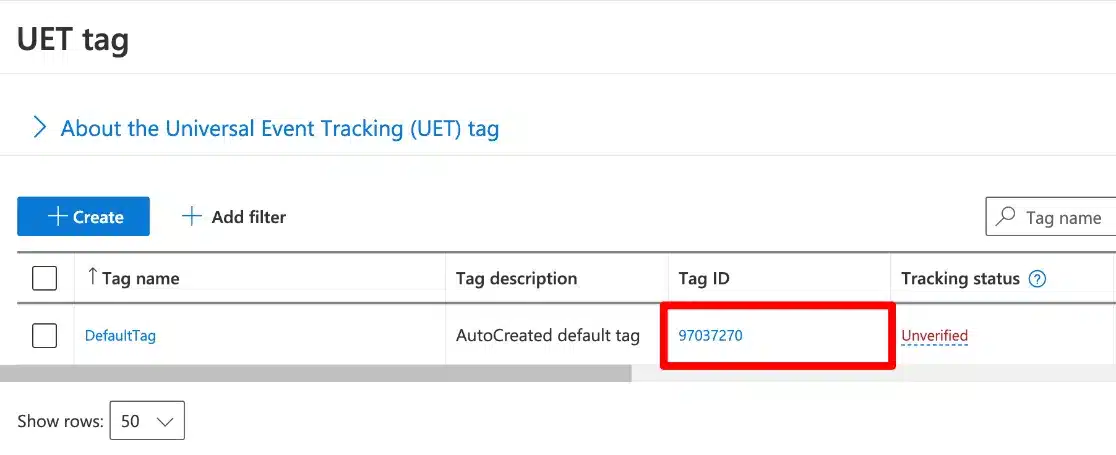
Head back to WordPress after copying your UET tag number.
Step 7: Add Your UET Tag ID in WordPress
You made it to the last step of setting up Microsoft Ads (Bing) conversion tracking!
From your WordPress admin, go to ExactMetrics » Settings and click the Conversions tab in the top menu. Now, click to expand the section titled Ads Tracking:
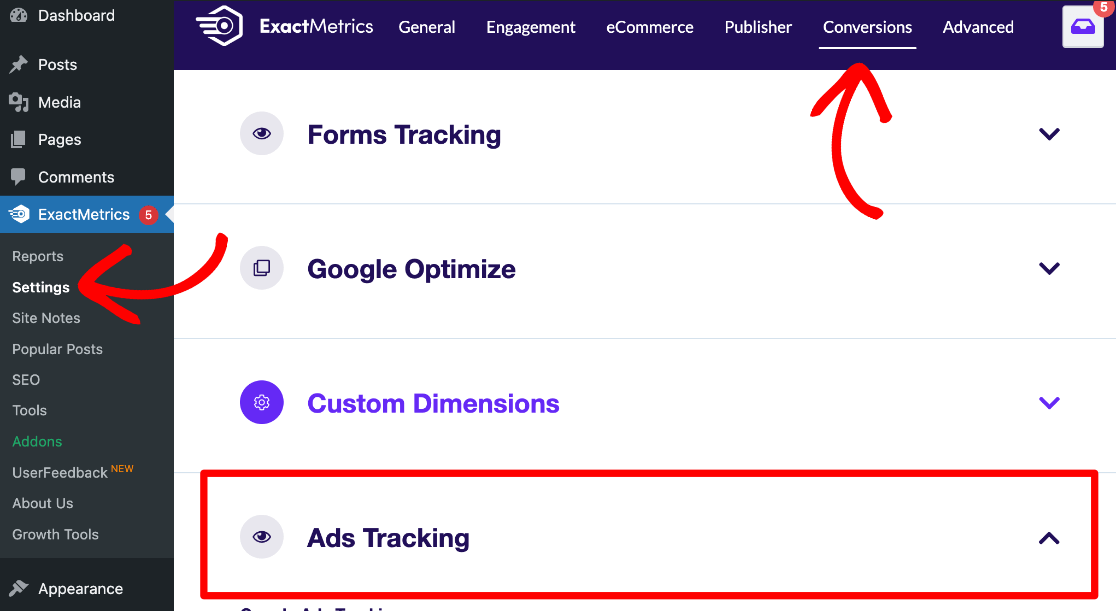
Scroll down and you’ll see a field called Bing Ads Tracking where you can enter your UET tag ID. Simply paste the Tag ID from your Microsoft Ads account into this field:

That’s it! Your UET tag is connected to your WordPress site, and you’re all set for Microsoft Ads (Bing Ads) conversion tracking.
By adding your Bing UET tag with ExactMetrics, you can easily track your purchases and conversions in WordPress to better optimize your Microsoft Ad campaigns, and use page-view tracking to create an effective Bing retargeting strategy.
Plus, you’ll get all your important Google Analytics data right in your WordPress dashboard!
If you liked this article, we think you’ll be interested to learn about our 30 Epic Marketing Hacks for Explosive Traffic Growth.
Not using ExactMetrics yet? What are you waiting for?
And don’t forget to follow us on Twitter and Facebook to see all the latest Google Analytics tutorials.


